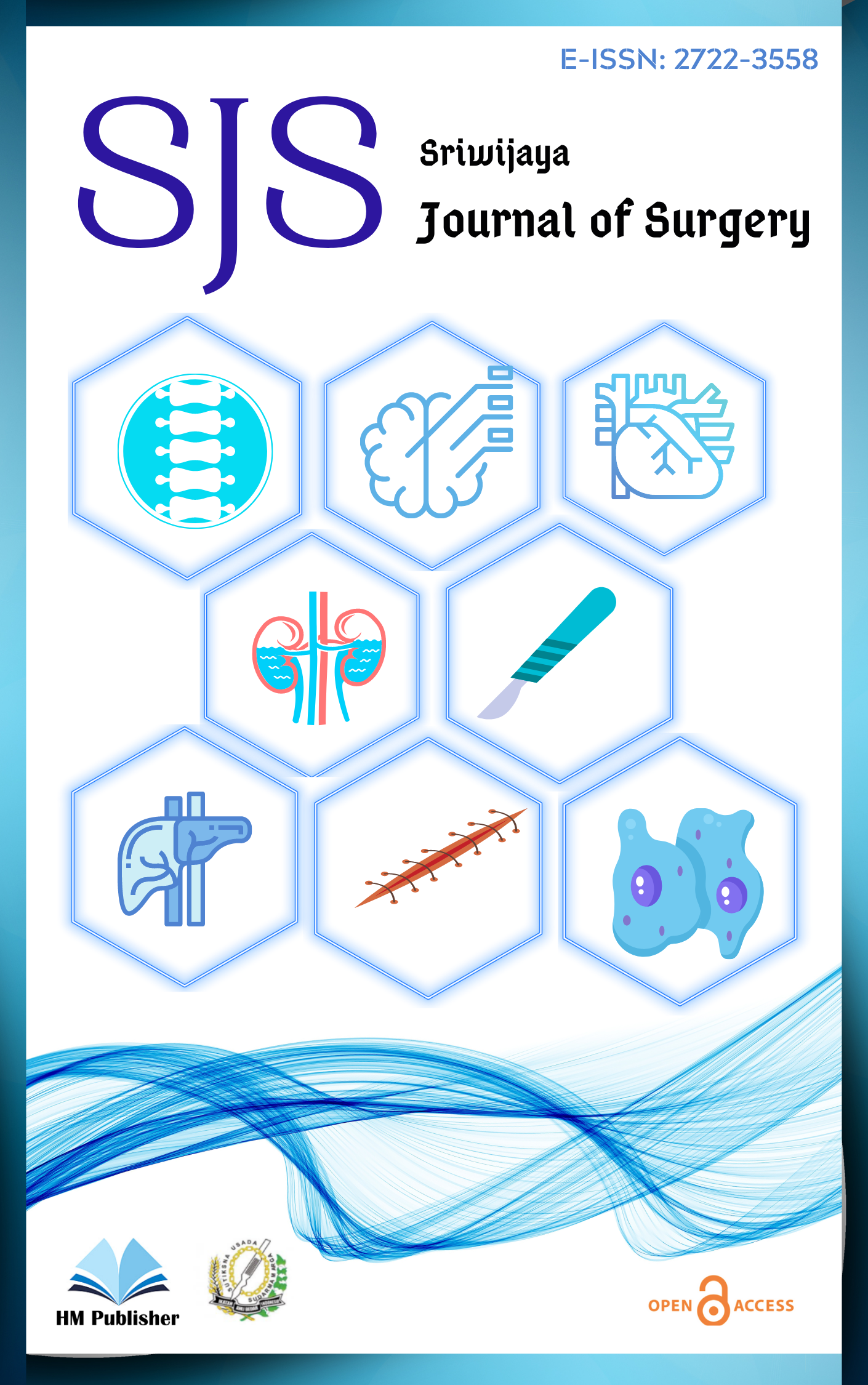Main Article Content
Abstract
Introduction: Pelvic ring fractures are calamitous injuries with high mortality. While clinical risk factors are well-defined in high-income countries, there is a scarcity of data from low- and middle-income countries (LMICs), where socioeconomic factors may critically influence survival. This study sought to explore the sociodemographic and clinical factors associated with in-hospital mortality following pelvic fractures at a tertiary trauma center in Indonesia.
Methods: A retrospective cohort study was performed on all patients (N=31) admitted with traumatic pelvic fractures to Dr. Mohammad Hoesin General Hospital between January 2021 and June 2025. Data on patient demographics, socioeconomic variables, injury mechanisms, and clinical management were analyzed. The primary outcome was in-hospital mortality. Given the exploratory nature of the study and the small sample size, bivariate analysis using Pearson's Chi-Square and Fisher’s Exact tests was conducted to identify potential associations.
Results: The overall in-hospital mortality rate was 9.7% (3 of 31 patients). The cohort was primarily young adults (61.3% aged 20-59 years) injured in traffic accidents (87.1%). The only variable found to have a statistically significant association with mortality was occupation. All three fatalities occurred in patients from the informal employment sector, corresponding to a 37.5% mortality rate within this subgroup (p=0.008). No significant association was found for established clinical predictors, including Young-Burgess fracture classification (p=0.736), a finding likely attributable to the study's limited statistical power.
Conclusion: This study, though limited by its sample size, identified a powerful association between informal sector employment and mortality after pelvic fracture. This finding generates the critical hypothesis that in an LMIC setting, socioeconomic vulnerability is a paramount driver of poor outcomes, likely mediated through delays in care and presentation with more severe physiological derangement. These results underscore the need for a socio-clinical approach to trauma care and highlight a crucial area for future, more definitive research.
Keywords
Article Details
1. Authors retain copyright and grant the journal right of first publication with the work simultaneously licensed under a Creative Commons Attribution License that allows others to share the work with an acknowledgement of the work's authorship and initial publication in this journal.
2.Authors are able to enter into separate, additional contractual arrangements for the non-exclusive distribution of the journal's published version of the work (e.g., post it to an institutional repository or publish it in a book), with an acknowledgement of its initial publication in this journal.
3.Authors are permitted and encouraged to post their work online (e.g., in institutional repositories or on their website) prior to and during the submission process, as it can lead to productive exchanges, as well as earlier and greater citation of published work.

